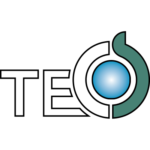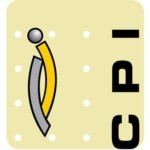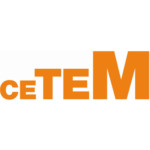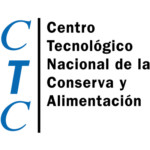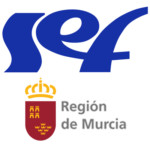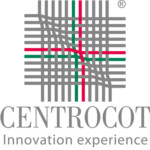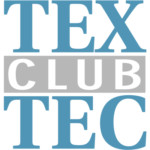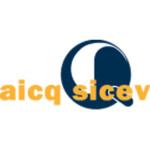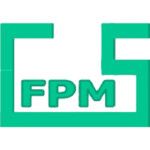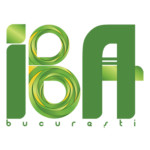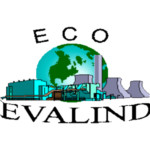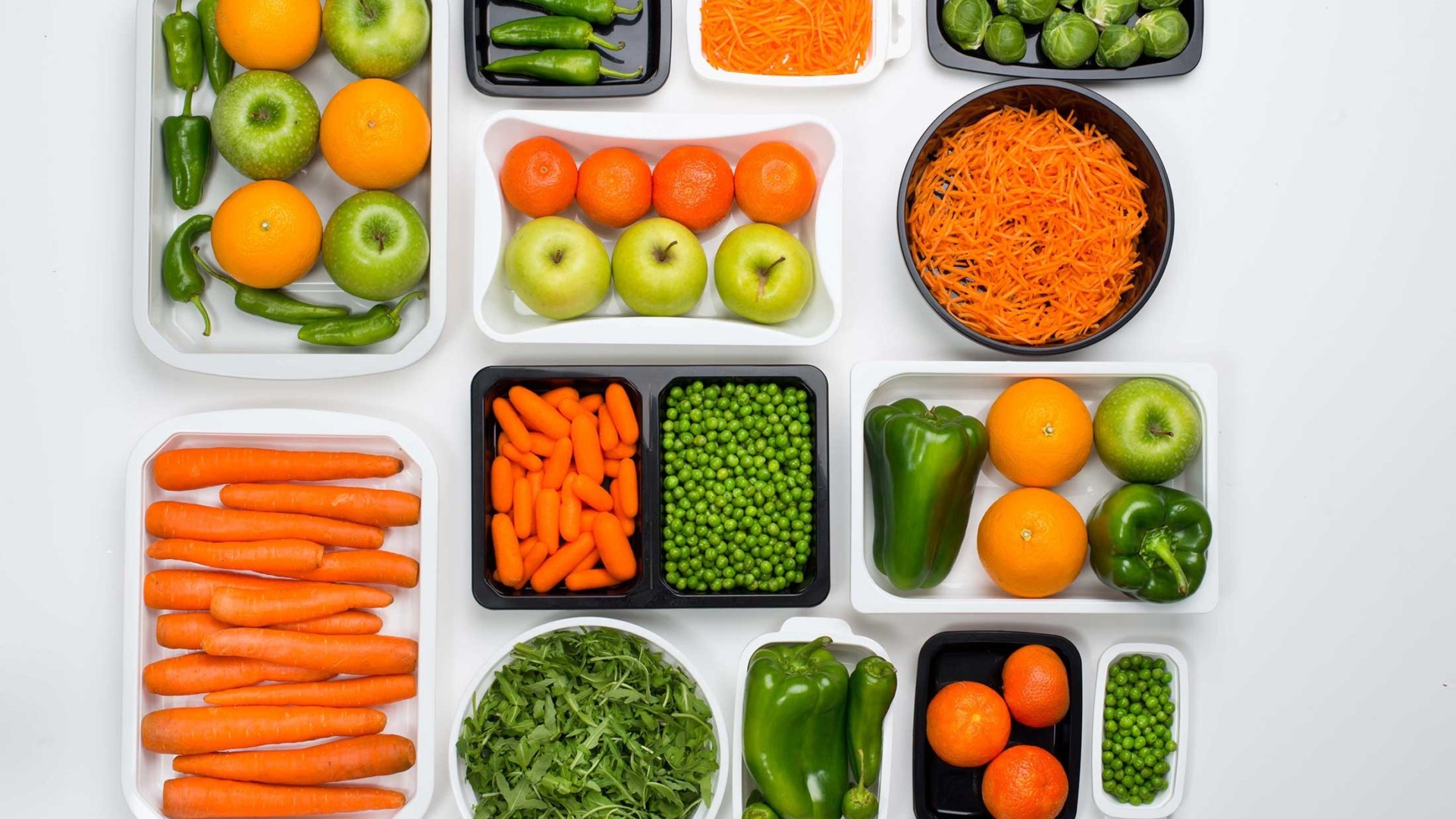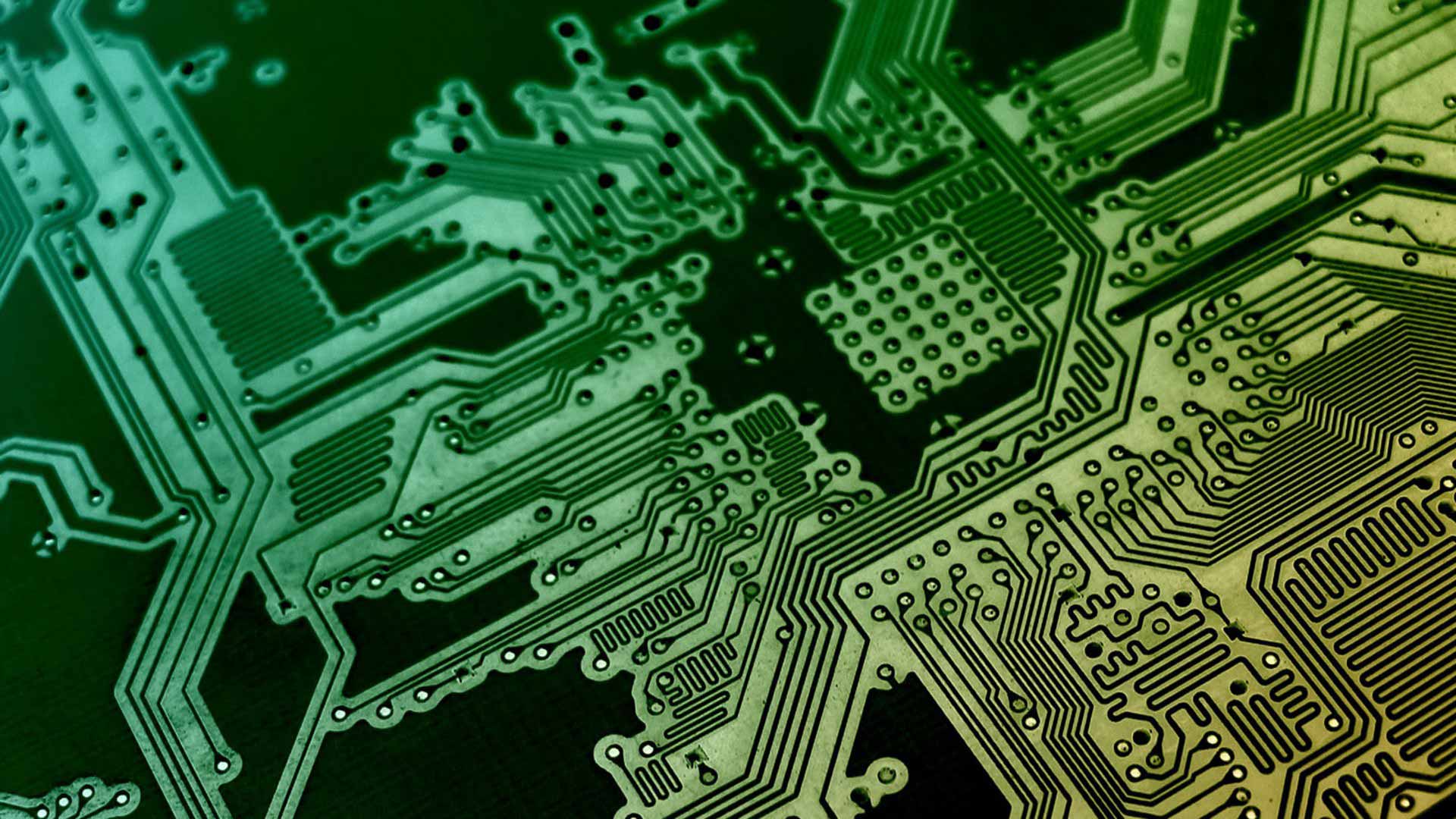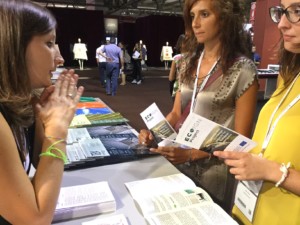Since 1971, the Environmental Actions Programmes are addressing the EC in the environmental field, identifying priority areas and integrating environmental objectives into other policies for tackling environmental issues. In 2013, the EU agreed its 7th Environmental Action Programme, calling for measures to further improve the environmental performance of EU goods and services over their whole life-cycle including measures to increase the supply of environmentally sustainable products.
The Environmental Indicator Report 2014, was set up by the European Environment Agency (EEA) to evaluate such measures, focusing on Food, Clothing and Electric and Electronic Goods. This report appoints Eco-innovation and Eco-design as crucial transition factors that hit at how sustainable production and consumption patterns might look in the future, as more than 80% of the environmental impact of a product is defined at the design stage.
Furthermore the Bruges Communiqué on enhanced European Cooperation in Vocational Education and Training for the period 2011-2020 says that ‘…the transition to a green economy is a mega trend which affects skill needs across many different jobs and sectors’.
The EEA Report 2014 indicates some opportunities in education for the change to a sustainable production-consumption systems like educating designers on their choices implications across the product life-cycle. This could include raising awareness on the pressures associated with different raw materials. It could also include training on how selecting materials and increasing the reuse potential and eventual recycling.
The 3rd report of EEA (Environmental Impacts of Production-Consumption Systems in Europe) indicates that the EU economy is highly dependent on trading with the rest of the world. Electrical and electronic goods, clothing and food are production-consumption systems with globalized supply chains and large shares of imports to the EU economy. Production of these goods in Europe still contributes considerably (but decreasingly) to gross domestic products (GDP) and jobs, while these sectors continue growing in many less developed countries.
If the production stage is more often being carried out abroad, the design phase is mainly undertaken by European designers.
The overall objective is to highlight ways that production-consumption systems can be adjusted to augment societal benefits and minimize societal costs.
Ecosign
ECOSIGN is a Sector Skills Alliance co-funded by the Erasmus+ Programme of the European Union, that started on 1st November 2015 and will end on 31 October 2018, aiming at creating an Eco-Innovation Skills partnership in four European countries (Slovenia, Spain, Romania and Italy) addressing the lack of knowledge of designers coming from the three economic sectors in which the Environmental Indicator Report 2014 focuses: food packaging, electronic goods and textile/ clothing.
ECOSIGN will allow industrial designers from those sectors to reduce environmental impact during the product life-cycle from the earliest stage of design, including the use of raw materials and natural resources, manufacturing, packaging, transport, disposal and recycling, avoiding the risk of uncoordinated product planning that could lead to a negative impact for the environment (for example, eliminating a toxic substance should not lead to higher energy consumption).
The main results of this alliance will be a new joint curriculum and a training course for European eco-designers that will add skills and competences to the designers regarding environmental technologies. Also, it will allow designers, from one specific sector, to change their industrial activity to other sector.
Target groups are:
- Vocational Students
- Food packaging Designers
- Fashion and industrial textile designers
- Designers of electronic/electrical goods
ECOSIGN aims and objectives will contribute to the Agenda for New Skills and Jobs, an EC initiative for reaching the employment target for 2020 by equipping people with the right skills for the jobs of today and tomorrow and improving the conditions for job creation.
As the theme is very wide and it’s needed a multi-sectorial perspective, the partners of the project are from different countries specialized in eco-innovation in different sectors, as research centres and associations, educational providers or authorities like VET centres or independent certification bodies.
Project Partners
Experts Committee
[ SECTORS ]
News & Events
25
Jun 18
Published today a report focused on product reuse in Europe
The European Environmental Agency (EEA) has published today a report describing how reuse is addressed in the waste prevention program as stipulated in the EU Waste Framework Directive. The report provides data on the status and trends in reuse systems in Europe. In particular,
- It introduces the concepts of waste prevention in a circular economy and describes the policy background
- It investigates the existing waste prevention programs
- It examines the status and potential for reuse for key product groups (i.e. textiles & clothing, electrical & electronics etc.).
Reusing products means using them again for their original purpose. Promoting reuse often requires detailed technical insight in production processes and consumption patterns. Measures include setting standards for eco-design (*) aimed at easy disassembly and reuse of components, eco-labelling and public procurement to influence consumption patterns, etc.
—–
(*) To know more on Ecodesign, please use the online course developed by Ecosign Project, soon available in the E-learning section.
21
Jun 18
ECOSIGN training course: a tool to raise a generation of European Eco-Designers
Designing and producing products responsibly to be safe and sustainable, minimizing the environmental impact of products over their whole life cycle and ensuring that their disposal is the birth of something new, are concepts at the basis of the training course for Eco-Designers developed under the framework of the Ecosign Project, co-funded by Erasmus+ Programme of the European Union.
For more information, please read the Newsltter n. 7 attached.
15
Jun 18
EU Commission launches a roadmap how to improve towards more durable, reusable and repairable products. The importance of design.
The EU Commission has launched an initiative to consider how current EU legislation can be improved with a view to the development of more durable, reusable and repairable products. In a roadmap published on 7 May 2018, the Commission stated that the way products are designed, produced, used and discarded have a strong impact on the transition to a fully circular economy. There is felt to be large improvement-potential in terms of sustainability, in moving from linear to circular products: less use of resources, less waste, more jobs in repair and recycling sectors, and monetary savings.
This initiative will analyze relevant EU policies for their contribution to the circular economy. Some of the existing EU policy tools to promote the circular economy, such as the Ecodesign Directive, target specific product groups through market restrictions for the poorest performing products. In contrast, other policy tools, such as the REACH chemicals legislation, restrict use of certain substances in product groups.
The problem which the initiative aims to address is that many products in use today are not designed or produced with circularity in mind. They cannot be easily repaired, upgraded or remanufactured, resulting in premature obsolescence. Over the whole life cycle of the product, the use of resources is often sub-optimal. At their end-of-life, products are discarded and their materials not sufficiently recycled, causing valuable resources to be wasted, including critical raw materials. For instance, electrical and electronic products, which apparently have an estimated potential value of more than €48 billion are going to waste annually. Missing or unclear information for consumers on the environmental performance of products, including a proliferation of unverifiable or even misleading ‘green’ product claims, push in the same direction.
The aim is also to (i) analyze product groups with high circular economy potential currently not or only partially covered by EU policy tools, and (ii) describe actions and options to realize this potential. These steps will take due account of the phase of products’ life-cycles where instruments have their impacts: during design and production (upstream), during the use phase and/or at the end of life. Such products will include textiles, food etc….
More ifnormation at: click here
15
Jun 18
Circular Economy: new rules adopted in the EU
On 22 May 2018, EU Council adopted the Circular Economy Package which will apply throughout the European Union. Earlier, on 18 April 2018, the Package had been formally agreed to by the European Parliament. The Package lays down recycling targets and other requirements over the forthcoming years, setting binding requirements and strict rules on waste management. The main features of the Package are as follows (example are provided for products involved in Ecosign project: textile, packaging, electrical&electronical):
- New separate collection rules. For example: textile waste will have to be collected separately by 2025. NB: the Directive on waste electrical and electronic equipment (the WEEE Directive) already sets down separate collection requirements since 2002.
- Municipal waste will have to comply with the following recycling targets: 55% by 2025 and 65% by 2035.
- No more than 10% landfilling will be allowed by 2035.
- As for all packaging, 65% will have to be collected for recycling by 2025, with the proportion rising to 70% in 2030. Within that framework, there are mandatory recycling rates which vary according to type, with the 2030 targets ranging from 30% for wood-based packaging, to 85% for paper and cardboard. The figure for plastic packaging is set at 55%.
The text that will be soon published in the Official Journal of the EU, will enter into force 20 days after publication.
For further information, read the EU press release/Text of new directives: click here
6
Jun 18
ECHA launches the website “Chemicals in Our Life”
ECHA, the European Chemicals Agency, has launched the website “Chemicals in our life” aiming to provide useful information on the benefits and risks of using chemicals.
The website is designed to be user-friendly and it is divided into several sections: Trending, Products, Health, Environment, Work, and Hints & Tips.
The “Trending” section deals with news concerning chemicals.
The “Products” section provides specific information concerning various product category: clothing and textiles, electronics, plastic products, food, etc..
It is recommended buying products carrying official green and toxic-free labels, such as the EU Ecolabel, and consumers are encouraged to be informed, by suppliers, about chemicals contained in products. It also provides explanations on labels on chemicals and on the new hazard pictograms which warn of the damage a particular substance or mixture can cause to human health or to the environment introduced by the Classification, Labelling and Packaging (CLP) Regulation.
As a guide to choose safer products, the website reminds consumers to pay particular attention to CE markings on products. This is the marking that manufacturers are obliged to affix on products that fall under certain safety-related legislation. The marking is a sign of guarantee from the manufacturer that those products satisfy all EU legal requirements.
The “Health” section provides an explanation on health effects which chemicals may cause.
The “Environment” section allows users to explore effects of chemical use on the environment. It explains mitigating actions and environmental protection initiatives.
The “Work” section informs about safety precautions and exposure in a professional environment, providing advice on personal protection and chemical substitution by safer alternatives.
The “Hints & Tips” section contains tips for consumers on where to find more detailed information on specific topics.
This website is a useful reminder of some relevant restrictions or requirements. For example, on the website, by clicking on the “Products” and then “textiles and clothing” links, the user is immediately informed that “The EU is restricting or banning many dangerous chemicals that have been used in textiles for years, for example, azo colours (found in textiles and leather products), certain dye substances (textiles and leather products), chromium VI (leather products), dimethylfumarate (DMF, used to prevent mould) or certain phthalates (textiles, plastic shoes).”
10
May 18
Networking event for Ecosign Project
On 27 April 2018, the Italian partners of Ecosign Project participated at the networking event “CIRCULAR EU INITIATIVES: NETWORKING & MATCHING”, organized by Material Connexion at SuperstudioPiù (Milan – Italy). On the occasion Ms Valentina Mazza, Aicq-Sicev, presented a speech on the latest results of Ecosign project and next steps.
The event has been an occasion to share experiences, expertise and strategies with other participants to financed projects within European Programs (Erasmus+, Interreg etc.) as well as interested stakeholders. The event was targeted to the following subject areas: materials, circular economy, industrial symbiosis, training, textile & fashion, design driven innovation, material innovation.![DSC_0105_preview[1]](http://www.ecosign-project.eu/wp-content/uploads/2018/05/DSC_0105_preview1-300x200.jpeg)
29
Mar 18
Contenuti e Fase sperimentale del progetto Ecosign: il percorso formativo per diventare ECO-DESIGNER
Giunto al 28° mese di lavoro, il team Ecosign ha sviluppato la struttura dei corsi e i relativi contenuti. Nei periodo compreso tra aprile e luglio 2018, inizierà la fase sperimentale del progetto con la realizzazione di “Pilot Cases Experiences”, che serviranno per testare i percorsi formativi messi a punto dai partner per i settori di interesse: imballaggio alimentare, elettrico & elettronico, tessile & abbigliamento.
I corsi, completamente gratuiti, sono suddivisi in due moduli. Il primo è introduttivo al tema della eco-progettazione sotto vari aspetti, quali ad esempio i principi e i trend di evoluzione, il quadro legislativo, l’analisi del ciclo di vita e dei costi, i sistemi di gestione ambientale.
Il secondo modulo, invece, analizzerà i principi dell’eco progettazione in ogni specifico settore. Al termine del corso è previsto un “project work” in cui i partecipanti dovranno impostare un progetto “close to market” applicando i concetti e le conoscenze acquisite durante il corso.
Maggiori informazioni si trovano nella Newsletter n. 6 allegata.
22
Feb 18
EU strategy for plastics in a Circular Economy
The European Commission announced in January this year that it has adopted the first-ever Europe-wide strategy on plastics, as part of the EU’s transition towards a more circular economy. The goal is to protect the environment whilst at the same time laying foundations for a new plastics economy, where design and production fully respect reuse, repair and recycling needs, and more sustainable materials will have to be developed.
Under the new strategy, all plastic packaging on the EU market will, it is intended, be recyclable by 2030, the consumption of single-use plastics will be reduced, and the intentional use of microplastics will be restricted.
Every year, Europeans generate 25 million tons of plastic waste, but less than 30% is collected for recycling. Across the world, plastics make up 85% of beach litter.
The EU wants to ensure that plastic packaging itself is fully recyclable and improve consumer labeling by creating new standards of quality. The Commission has announced that it will introduce measures to limit microplastic pollutants for the oceans, such as those used in cosmetics. Action on plastics was identified as a priority in the 2015 Circular Economy Action Plan, to help European businesses and consumers to use resources in a more sustainable way.
The first-ever European Strategy for Plastics in a Circular Economy adopted on January 16, 2018 will transform the way plastic products are designed, used, produced and recycled in the EU.
6
Nov 17
The importance to prevent toxic chemicals entering the Circular Economy
A well designed circular economy will offer main benefits for consumers, such as more durable consumer goods and novel services. But a circular economy also poses new challenges for consumer safety.
Today’s products may contain chemicals that were legal at the time they were manufactured but are now either restricted or banned, such as lead, PCBs or DecaBDE. Increased material recycling give these chemicals a second life.
For this reason, on 7 August 2017, BEUC, the Bureau Européen des Unions de Consommateurs, a leading EU consumer group, issued its response to a European Commission consultation paper launched on July 2017 on chemicals in the circular economy, pointing out that the current EU chemicals legislation is inadequately suited to facilitating a successful circular economy, while welcoming the Commission’s decision to address the interface between chemicals, products and waste legislation.
In particular, BEUC called for a precautionary approach to prevent recycling which would re-inject toxic substances into the production cycle. This means accepting that some materials and products should not be recycled.
As in a circular economy it becomes difficult to control and limit combined exposure, BEUC asked the EU to develop a more coherent approach to risk assessment and management to achieve a successful circular economy. This might include targeted strategies for all product categories where recycled materials will be used in particular for products that come into close, regular and prolonged contact with consumers.
After analyzing all feedback received from stakeholders, the European Commission will decide whether the initiative will be pursued, and on its final content.
For more information:
The EU Consultation Paper is downloadable at the following link.
The full text of the BEUC response is downloadable at the following link.
1
Jun 18
Platform launched to help recyclability of plastic packaging
Aiming to help the plastic packaging industry align with the European Strategy for Plastics in a Circular Economy, Plastics Recyclers Europe (PRE), the European Federation of Plastics Regenerative Enterprises, launched the RecyClass Platform, a program to support companies interested in increasing recyclability of their plastic packaging.
The basis is the Recyclass packaging recyclability evaluation system, linked to a tool that allows online assessment of the environmental performance of each specific plastic packaging solution. At the end of the procedure, the packaging is classified according to a scale that goes from “A” (easily recyclable) to “F”, when the only option is waste-to-energy.
The RecyClass Platform features:
- Costumer service support via email to all users’ questions regarding recyclability of your packaging.
- Official RecyClass Certification and label of packaging products.
- Analysis and assessment of your recycling policy.
- Design of a customized training course on site.
- Seat at the Advisory Board of RecyClass.
- Display of your company logo in a dedicated section of the RecyClass website.
15
Mar 18
New amendments to the EU Regulation on Food Contact Materials
The new EU Regulation 2018/79 entered into force on 8 February 2018, adding conditions and restrictions regarding certain plastics, uses and substances for food packaging. It amends Regulation 2011/10 on plastic materials and articles intended to come into contact with food (the food contact materials or ‘FCM’ Regulation).
The new amending Regulation extends the use of one substance and inserts further substances onto the Union List, specifying their uses and concentration limits. The new Regulation notes that the European Food Safety Authority (EFSA) has published further scientific opinions on particular substances that may be used in FCMs as well as on the permitted use of authorized substances. The new text aims to ensure that the FCM Regulation reflects EFSA’s most recent findings.
The amendments concern the following substances and mixtures:
- CAS No 25101-28-4: (butadiene, styrene, methyl methacrylate, butyl acrylate) copolymer cross-linked with divinylbenzene or 1,3-butanediol dimethacrylate: The current authorization of this substance is extended to include the use as a polymeric additive at up to 40% w/w in blends of styrene acrylonitrile copolymer repeat-use articles intended for contact at room temperature with aqueous, acidic and/or low alcoholic (< 20%) foodstuffs for less than 1 day and with dry foodstuffs for any duration of contact including long-term storage.
- CAS No 80512-44-3: 2,4,4′-trifluorobenzophenone: This monomer is inserted onto the Union List for use as a co-monomer in the manufacture of polyether ether ketone plastics up to 0.3% w/w based on the final material.
- CAS No 1547-26-8: 2,3,3,4,4,5,5-heptafluoro-1-pentene: This monomer is inserted onto the Union List for use as a co-monomer together with tetrafluoroethylene and/or ethylene co-monomers to manufacture fluorocopolymers that are only intended to be applied as polymer processing aids at up to 0.2 % w/w of the FCM, and when the low molecular mass fraction below 1,500 Da in the fluorocopolymer does not exceed 30 mg/kg food.
- CAS No 39318-18-8: tungsten oxide: This substance is included in the Union List for use as a reheat agent in polyethylene terephthalate (PET) without setting out a verification requirement for migration limits since the substance is insoluble. For other technical functions or use in other polymers, the specific migration limit is set at 0.05 mg/kg food.
- CAS No 85711-28-0: methyl-branched and linear C14-C18 alkanamides, derived from fatty acids: This mixture is included in the Union List for use in the manufacture of polyolefin articles intended for contact with all foodstuffs other than fatty foods and when its migration does not exceed 5 mg/kg food.
Plastic materials and articles complying with the FCM Regulation as applicable before the entry into force of the amending Regulation, may be placed on the market until 8 February 2019 and may remain on the market until exhaustion of stocks.
27
Nov 17
EU regulation on food contact plastics materials
In January 2011, the European Union published Regulation 10/2011 that established specific requirements for plastic materials and articles which are intended or could reasonably be expected to come into contact with food, or are already in contact with food.
This regulation applied to:
- materials and articles, and parts thereof, consisting exclusively of plastics;
- plastic multi-layer materials and articles held together by adhesives or by other means;
- materials and articles referred to above that are printed and/or covered by a coating;
- plastic layers or plastic coatings, forming gaskets in caps and closures, that together with those caps and closures compose a set of two or more layers of different types of materials;
- plastic layers in multi-layer materials and articles.
and it specified the list of substances that are allowed for use in the manufacture of plastic food contact materials, restrictions on the use of these substances and rules to determine the compliance of plastic materials and articles.
In particular, the Regulation was concerned about health risks deriving from certain substances which are used in the manufacture of plastics and which can be transferred into food via migration from the plastic food contact materials. Only substances included in Annex I to Regulation 10/2011 were allowed to be used.
Regulation 10/2011 has now been reviewed eight times since it was issued in 2011. The initial seven amendments were concentrated on the authorized substances contained in Annex I while the latest, the Regulation 2017/752 published on 29 April 2017, amends Annexes I, II, III and IV to Regulation 10/2011. The new Regulation contains a number of significant changes, such as:
- Inserting six new substances to the authorized list of substances;
- A new entry for the specific migration of nickel, restricting it to no more than 0.02 mg/kg in point 1 to Annex II;
- Editorial changes to Table 3 in point 4 to Annex III;
- Replacing the residual content requirement for 10 substances with specific migration limits.
Regulation 2017/752 entered into force on 19 May 2017, but it allows food contact plastics which complied with Regulation 10/2011 and further amendments to be placed on the market until 19 May 2019.
The Regulation 2017/52 can be downloaded at the following link.
6
Nov 17
Plastics & Paper in Contact with Foodstuffs – Event in Berlin 4-7 December 2017
Taking place from 4 – 7 December 2017 in Berlin, Germany, Plastics & Paper in Contact with Foodstuffs (P&P) is more than just a conference – it is an event aiming to discuss all topical concerns in the food contact industry, with insights into:
- The latest legislation
- Compliance case studies and pertinent issues of food packaging
- Plus information on inks, coatings and adhesives
More information and programme at the following link: https://www.food-contact.com/plastics-paper/mp
22
May 17
Research about Circular Economy in Italy for packaging
The report presents the results of a research commissioned by CONAI in the year 2016 at “Istituto di Gestione della Scuola Sant’Anna di Pisa” and “IEFE Bocconi Circulatory Observatory (GEO)”.
The research involved company members of CONAI with more than one million euros turnover and more than 10 employees, with the aim of understanding the level of adoption of circular principles in the different phases of the production process, from the supply of raw materials to product design, production and distribution. The research focused on the four main categories of CONAI member companies, such as:
- pacakaging producers;
- industrial packaging users;
- distributors/wholesaleers;
- producers of secondary raw materials
Each phase of the circular economy – supply, design, production, distribution and use – as defined by the European Commission – was treated in a section of the research in which the level of adoption of the Circular Economy practices by companies was measured by using specific key performance indicators (KPIs). It was also considered the implementation levels of a set of actions aimed at circularity, today and in perspective.
Another aim was to understand why companies adopt virtuous behaviors, what are the barriers and difficulties that prevent them from implementing the path to full circularity, and what actions are needed to support the transition from a linear enterprise strategy to a more sustainable,circular approach.
The report is available in Italian language at the following link: https://www.researchgate.net/publication/316994452_L’Economia_Circolare_in_Italia
17
Feb 17
Presentation of Ecosign Project during VIII Food Technology International Symposium
The MURCIA FOOD BROKERAGE EVENT 2017 will take place in Murcia on 9-10 May 2017. This is an international event that will present the latest innovations in the field of Food Technology and where companies from different countries will have the opportunity to meet and to find new ways of partnership.
On the same days, it will be held the “VIII Food Technology International Symposium” with lectures and presentations of the latest news regarding the food sector. It is also foreseen a specific session about Circular Economy that will see the participation of Mr Roberto Vannucci (Centrocot) with a lecture regarding “Principles of Circular Economy and EcoDesign. Ecosign Project”
Registration at: www.b2match.eu/murciafood2017
Program enclosed
6
Oct 16
Presentation of Ecosign project at the next CTC workshop on Food Packaging
Next 20 October 2016, CTC will organize a half day workshop that intends to give an overview of food packaging technologies
in plastic containers and glass. One of the speeches will be focused on the objectives of Ecosign Project. The workshop is addressed to technical staff and auxiliary food companies,
technical staff of public and private organizations operating in this sector.
The workshop will be held in CTC premises (Murcia, ES). The final program is visible here: .ctc_20-oct-2016_food-packaging-conferecnce_presentation-ecosign
9
Mar 18
Registration now open for the free course to form Textile Eco-Designers
Registration to participate to the training course to become an “Eco-designer for textile sector” developed by Ecosign Project, are open till 19 March 2018.
The course, that is completely free thanks to the co-financing of Erasmus+ Programme of the European Union, will start on 26 March and end on 15 July 2018.
The training is proposed in a “blended” mode, therefore it can be used mainly “at distance/online” and available on a dedicated platform, and in presence in 5 short meetings to be held at Centrocot’s offices, Busto Arsizio, VA (I) – durign which participants will discuss with teachers/tutors how to approach the platform and contents of the course. Every 2 weeks, 3 new units will be made available for the students.
the courses are intended for:
- professionals/employees, already i working in the sector aiming to improve their knowledge regarding sustainability.
- students or unemployeed aiming at acquiring knowledge and skills in sustainable and environment-friendly technologies.
At the end of the trianing course foreseen by ECOSIGN Project, participants will be able to combien creativity with a good knowledge of materials and processes, standards and legilsation, and use techniques in an eco-design logic.
At the end of the training course all participant will receive a certificate of attendance and will be offered the possiblity to give an exam to certify the skills acquired wit the course.
for information, contacts, registration: https://www.centrocot.it/site/portfolio/progetto-ecosign/
Short presentation enclosed (in Italian).
6
Dec 17
Report on circular economy in the textile industry
Early December, a 150 page report named A new textiles economy: Redesigning fashion’s future has been published. It outlines a vision and sets out ambitions and actions – based on the principles of a circular economy – to develop a new textiles economy, clothes would be designed to last longer, be worn more, and be easily rented, resold or recycled, and no toxic substances or pollutants would be released during their production and use. It also contains useful information about chemicals and raw materials used in the textile industry.
The report is free and available at the following link: https://www.ellenmacarthurfoundation.org/publications/a-new-textiles-economy-redesigning-fashions-future
15
Nov 17
Textile recycling as a contribution to circular economy and production waste enhancement
The environmental impact of the textile production chain could be ascribable to different stages of the system itself. For instance, synthetic fibre production deeply affects the environment because of the employment of nonrenewable resources as well as in natural fibre production (e.g. Cotton) big quantities of water and pesticides are used.
Furthermore, waste amounts represent a remarkable issue whether they are produced during production and processing of textile materials, such as production waste and excesses (industrial or pre-consumption), or at the end-of-life of products, once it had been sold and used (post-consumer materials).
In this sense, a particular attention have to be given to recycling processes for both products and waste, aiming at reintroducing them in a new industrial process, through new manufacturing ways, and so, starting a new life-cycle.
As an example, Assosistema stated that recycling secondhand clothes could:
– cut textile environmental impact on global warming down by 53%;
– reduce pollution caused by the textile industry by 45%;
– cut water eutrophication down (caused by nitrate and phosphate excess in water flows) by 95%.
However, there are different approaches to be used and different ways to identify suitable technologies that could lead product manufacturing towards a remarkable reduction of production costs, while considering recyclable materials as a real and efficient alternative. Among them, there are technologies for production waste recovery.
Production waste recycling
In Italy, tons of wasted textile fibres could be allocated for other applications, reducing the impact of Textiles & Clothing. Textile recycling could supply low-cost raw materials with low environmental impact for many application fields, such as automotive, furnishing, sailing or insulating panel production.
According to data released by Assosistema (2013), each year in Italy, 124.300 tons of textile waste from private households are produced, but only a small share of them is recovered at their end-of-life.
As far as textile waste recycling is concerned, better results had been obtained in other countries, in which Switzerland stands out, recycling about half of textile waste each year throughout the country.
Opportunities for raw materials with low environmental impact
Since the quality of materials considered as wastes is higher than expected, it could be a good practice to recover them through a real recycling plan, both mechanical and chemical. Furthermore, those recovering processes are often more sustainable than raw materials manufacturing.
However, in order to reach a good rationalization level, the efficiency of those processes should be improved as well as the quality of recycled materials. For instance, in order to create systems that could make textile recycling easier, the (automatic) phase of separation of post-consumer materials should be enhanced as well as advanced technologies should be developed for dyestuffs and finishing extraction and blended fibre separation in fabrics avoiding fibre damages that could represent a severe problem in terms of quality.
Recycling technologies
For that, in the last few years, many studies had been carried out to improve textile recycling of industrial and post-consumer wastes.
As far as chemical recycling is concerned, cotton has been deeply studied and today many pilot schemes had been put in action in order to evaluate technologies and results on the market.
On the contrary, technologies for PET and PA 6 recycling are already consolidated, even if further studies could offer the chance to enhance the entire process. In chemical recycling, for process efficiency, fibre chemical composition and dyestuff/finishing nature are really important. However, the employment of enzymes, could be a further factor for process improvement, while treatments with ionic liquids for fibre and finishing separation are being carried out.
As far as mechanical recycling is concerned, studies had been focused on the process itself, according to fabric structures (plain fabrics, knitted fabrics) in order to protect the quality of recycled fibres. In the future, it will be necessary to develop a more systematic spinning process in order to guarantee a good production pace and a high quality level obtained from recycled fibres.
In conclusion, it could be useful to remember the most famous recycling example in the textile sector, i.e. PET bottles. After that polluting substances had been selected and taken, PET can be transformed in continuous filaments for clothing application (fleece, paddings, composite materials)
6
Sep 17
The EU changes criteria for EU Ecolabelling of textile products
The EU Ecolabel is a voluntary scheme allowing companies to label their products as having a lower environmental impact than other products within the same group. On 25 July 2017, the European Commission issued Decision 2017/1392 amending Decision 2014/350/EU, establishing the ecological criteria for the award of the EU Ecolabel to textile products.
According to data from the European Commission, four out of five European consumers would like to purchase more environmentally friendly products, which are certified as such by an independent body (see the text at the following link).
Consumers in the European Union that purchase textile products bearing the Ecolabel (the logo of which is a flower), are able to be assured of a number of environment and health related factors. These include the limited use of substances that are harmful to the environment as well as to human health, reduced water and air pollution, resistance to shrinking when the textile is being washed and dried, and colour resistance to perspiration or when the product is being washed.
Click the following link to view the Decision 2017/1392/EU .
28
Feb 17
Presentation of Ecosign Project at ETP Conference, Brussels 30-31 March 2017
The 12th annual Conference of the European Technology Platform for the Future of Textile and Clothing will take place in Brussels on 30-31 March 2017. The focus of the event will be “Textile Research in HORIZON 2020”. On the first day of conference there will be 2 sessions dedicated to Sustainability: “Circular Economy” and “Resource Efficiency”. that will see the contribution of Ms Daniela Nebuloni, Centrocot, that will present Ecosign project with a lecture regarding “Ecosign: Green jobs, new skills for sustainable competitiveness”. The draft programme is available at the following link
10
Jan 17
Profile of Textile Eco-Designer
Ecosign Project, started on 1st November 2015 and co-funded by the Erasmus+ Program of the European Union, aims to create a partnership in eco-innovation knowledge and to fulfill the designers’ lack of expertise in this field, focusing on the three following sectors: food packaging, electronic and electric devices and Textiles & Clothing.
As a first step, it has been defined the profile of Textile Eco-Designer that will be a technician who will have to match his/her own creative skills and a good knowledge of materials and processes, understand certifications, consider the legal and regulatory constraints, with attention also to the requirements for export, and design in an eco-design logic without losing sight of the industrialization of the product. This figure, thanks to the ability to design taking into account constraints and opportunities, is a precious resource capable of interacting both with the production as with the commercial marketing area. More news and info at www.ecosign-project.eu
10
Jan 17
Newsletter n. 3 – The role of design in the production process planning
In the Newsletter n. 3, it will be discussed the contribution of design to production planning as a contribution to sustainability and the enhancement of Circular Economy in the textile & clothing sector.
See enclosure: ecosign-newsletter-no-3_eng
1
Jun 18
Germany launches product registration under revised WEEE rules
New German rules on the registration of electrical and electronic equipment (EEE) considerably widen the scope of the products which have to be registered. From 15 August 2018 onwards, all EEE falls within the scope of application unless it is explicitly excluded by a statutory exemption.
The rules are contained in the 2015 revision of Germany‘s Act Governing the Sale, Return and Environmentally Sound Disposal of Electrical and Electronic Equipment (the ElektroG). The ElektroG implements a 2012 revision of the EU’s waste electrical and electronic equipment Directive (the WEEE Directive).
The new rules aim at increasing the rate of old appliances and devices to be properly disposed of and recycled. This means that manufacturers and distributors of previously registration-free devices must register and thereby participate in the disposal costs.
For certain products, the registration requirement depends not only on the nature but also on the intended use.
15
Dec 17
Scope of “RoHS 2” is Amended as UE aims to boost circular economy
On 21 November 2017, the EU published the new Directive 2017/2012 that amends the scope of Directive 2011/65/EU on the restriction of the use of certain hazardous substances in electrical and electronic equipment (RoHS 2), focusing in particular on the secondary market operations for electrical and electronic equipment (EEE). These consist of repair, replacement of spare parts, refurbishment and reuse, as well as retrofitting that for the EU should be facilitated to promote a circular economy.
As RoHS 2 allowed EEE that escaped the scope of the previous Directive 2002/95/EC (RoHS 1), but which did not comply with Directive 2011/65/EU (RoHS 2), to continue to be made available on the market until 22 July 2019 (both for first placing and on secondary market operations), with this new Directive the RoHS 2 prohibition of substances shall not apply to reused spare parts, provided reuse takes place in auditable closed-loop business-to-business return systems, and that the reuse of spare parts is notified to the consumer.
UE Member States will have to bring into force the laws, regulations and administrative provisions necessary to comply with Directive 2017/2102 amending RoHS 2 by 12 June 2019.
The full text of the new directive is available at http://eur-lex.europa.eu/legal-content/EN/TXT/PDF/?uri=CELEX:32017L2102&from=EN
6
Oct 17
EU Modifies the Energy Labelling of Products
The EU’s modification of the energy labelling rules for energy-related products has entered into force on 1st August 2017 with Regulation 2017/1369 (see http://eur-lex.europa.eu/legal-content/EN/TXT/PDF/?uri=CELEX:32017R1369&from=EN ) and will eliminate the current three A classes (A+ to A+++) and re-establish the previous scale of energy efficiency classes, using only the letters from A to G.
The new Regulation
- establishes a new framework for the labelling and the provision of standard product information regarding energy efficiency and energy consumption by products during their use.
- provides the possibility of a future further rescaling of the energy labelling scale, depending on whether, over time and with technological development, a high percentage of the products sold find themselves in the top classes. Rescaling means that the requirements for a particular product group for achieving an energy class on a label are made more stringent.
- as foreseen in previous Directive 2010/30/EU, it empowers the Commission to adopt “delegated acts” to establish the detailed requirements relating to the energy-efficiency labels for specific product groups. As long as the Commission has not yet adopted a new delegated act for a specific product group pursuant to the new Regulation, the requirements laid down in existing delegated acts that were adopted pursuant to Directive 2010/30/EU (or previous Directive 96/60/EC) will continue to apply to the relevant product groups (i.e. air-conditioners, ovens, lighting, fridges, driers, washing machines, televisions and vacuum cleaners).
According to the new Regulation, the Commission is to adopt, by 2 August 2023, new delegated acts under the Regulation in order to introduce a homogenous A to G scale of rescaled labels for each of the product groups covered by delegated acts adopted under Directive 2010/30/EU.
As from 1 January 2019, suppliers that want to place on the market a new model of a product covered by a delegated act first have to enter in the product database specific information on their new model. The product database will be accessible only to the market surveillance authorities of the EU Member States and to the Commission.
For models covered by a delegated act which are placed on the market before 1 January 2019, i.e. in the period between 1 August 2017 and 1 January 2019, the supplier has time until 30 June 2019 to enter the relevant information into the product database. For those models, and until the supplier has entered the relevant information into the database, the supplier has to make available an electronic version of the technical documentation to the market surveillance authorities and to the Commission within 10 days of receiving a request from these authorities or from the Commission.
18
May 17
New training concept for Eco-Designers in electronics sector
Enclosed the article focused on Ecosign Project presented at the International Conference on Industrial Tools and Advanced Processing Technologies ICIT&APT 2017 http://www.tecos.si/icit/ organized by TECOS on 24-26 April 2017.
ECOSIGN_article_ICITAPT 2017_TF_v4_April 2017
7
Mar 17
EU Commission proposes amendments for used electronics
On 26 January 2017, the European Commission unveiled a new proposal to amend Directive 2011/65/EU (RoHS 2); the current EU legislation setting out restrictions on the use of certain hazardous substances in electrical and electronic equipment (EEE). The proposed amendments are aimed at further facilitating the reselling and repair of EEE, in an effort to reduce hazardous waste, prolong the lifetime of products and contribute to the EU’s circular economy objectives.
Teh text of the proposal is visible at the following link
13
Jan 17
European Commission has published the Ecodesign Working Plan 2016-2019
The EU Commission has published the Ecodesign Working Plan 2016-2019 providing crucial insights into how the EU’s energy efficiency rules will be developed in that period.
Under the 2005 Ecodesign Directive, it has been established that the Commission must publish a working plan every three years setting out the list of product groups to be considered as priorities for the adoption of future energy efficiency standards. Prior to the latest adopted plan, the Commission had published two working plans, for the periods 2009–2011 and 2012–2014.
This latest 2016-2019 working plan has identified seven new product groups which have not been included in previous working plans or in the 2005 Ecodesign Directive, that are: electric kettles, hand dryers, elevators, building automation and control systems, solar panels and inverters, refrigerated containers, and high pressure cleaners. They will now become the focus of preparatory studies with a view to adopting individual implementing measures for each group.
To be underlined the prominence given at page 8 to the Ecodesign Directive’s potential to contribute to the EU achieving its circular economy goals. In this regard, the Commission has committed itself to examining numerous aspects relevant to the circular economy when revising existing implementing measures and developing new ones.
This will involve the Commission assessing the possibility of establishing more product-specific requirements in the areas of durability, reparability and recyclability. It has also stated that it intends to develop a circular economy ‘toolbox’ for Ecodesign, with a view to developing improved material efficiency requirements. The working plan notes that these could ultimately be included in revised and new implementing measures.
To view the entire text of the Ecodesign Working Plan 2016-2019: http://ec.europa.eu/growth/industry/sustainability/ecodesign_it
E-Learning

The present work, produced by the ECOSIGN Consortium, is licensed under a Creative Commons Attribution-NonCommercial-






